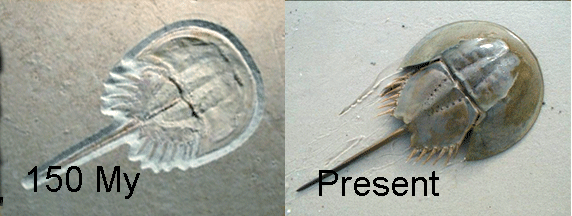Selective sweeps limit mitochondrial diversity in animals
An exciting paper in Science 28 April 2006 “Population size does not influence mitochondrial genetic diversity in animals” by Eric Bazin, Sylvain Glemin, and Nicolas Galtier from Universite Montpellier, France, calls into question current thinking in population genetics. The authors looked at intraspecific variation in nuclear and mitochondrial DNA using sequence data collected from public databases into Polymorphix database. Contrary to expectations from population genetic theory, there was “no correlation between mtDNA polymorphism and species abundance”. Analysis of non-synonymous (amino acid changing) and synonymous (silent) changes indicated that reduced mitochondrial diversity within species reflects positive selection. They conclude “mtDNA appears to be anything but a neutral marker and probably undergoes frequent adaptive evolution… mtDNA diversity will in many instances, reflect the time since the last event of selective sweep, rather than population history and demography.” Taken together, these findings help explain the general observation of constrained intraspecific mitochondrial variation in animals, even in organisms with enormous population sizes. Recurrent selective sweeps are natural tests of species boundaries and help explain why mtDNA genealogies generally capture the biological discontinuities recognized by taxonomists as species (Avise and Walker PNAS 96:992, 1999), in short, why DNA barcoding works! It is expected that large data sets generated by DNA barcoding surveys will help refine this analysis and identify possible ecological or biological correlates, providing insight into what drives selective sweeps. I close with a question: if a species is morphologically and ecologically stable, does it nonetheless undergo repeated selective sweeps?

150 My of selective sweeps?
This entry was posted on Sunday, May 7th, 2006 at 4:55 pm and is filed under barcode performance, General, Papers. You can follow any responses to this entry through the RSS 2.0 feed. Both comments and pings are currently closed.
December 29th, 2006 at 12:10 am
[…] This table-napkin analysis leads me to selective sweeps as pruning mitochondrial diversity within species (eg Bazin et al 2006 Science 312:570, see also editorial and reader commentary). If selective sweeps restrict mitochondrial diversity, then the question becomes what is being selected for? Environmental adaptation seems unlikely, as restricted variation is seen in species that are as best one can tell morphologically and ecologically unchanged (eg see earlier posts on horseshoe crabs, salamanders). It might be there is little tolerance for genetic variation due to interactions of mitochondrial proteins with other cellular components, but if so there should be species with genetic stasis in mitochondrial DNA, just as there are many species with apparent morphologic stasis. However, in simple distance trees most species show roughly similar genetic distances. […]